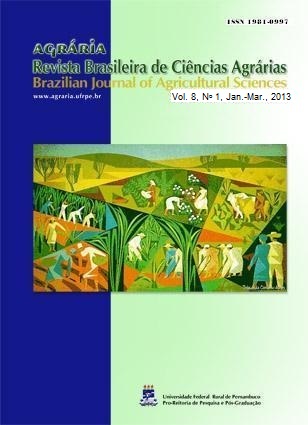Phytosociology of weeds in bean crop
DOI:
https://doi.org/10.5039/agraria.v8i1a1849Keywords:
community weed, interference, Phaseolus vulgarisAbstract
This research aimed to characterize the phytosociology of weeds in the bean crop (Phaseolus vulgaris L.) cultivated in the autumn-winter periods (2010), spring-summer (2010/2011) and summer-autumn (2011) in Urutaí GO. A metallic square of 0.25 m2 was randomly launched in 144 sampling spots of the bean crop, at the harvest. Species were identified, counted and weighed, and then frequencies, densities and dominances, both in absolute and relative terms, were calculated. The index of importance value and the relative importance (RI) of the species were also determined. Twenty-four species were identified in 22 genera and 8 families. The family Poaceae was the most representative, followed by Asteraceae, Euphorbiaceae, Solanaceae, Amaranthaceae, Commelineaceae, Convolvulaceae, Fabaceae and Cyperaceae. Zea mays presented the highest RI, followed by Cyperus rotundus in autumn-winter season, while during spring-summer specie Ageratum conyzoides was the most important. Digitaria horizontalis and Bidens pilosa were, respectively, the most important species in bean cultivation in summer-autumn season.



